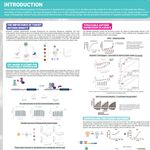Speakers
Event Date & Time
Date: February 28, 2024
Time: 8:00 AM (PST), 11:00 AM (EST), 5:00 PM (CET)
Abstract
Microscopy involves the study of organisms too small to see with the naked eye, magnifying the small worlds within our own so we can study and understand these samples. Organs, tissues and cells, all the way down to viruses, proteins and single molecules. However, there exists hard limitations in how much you can resolve with a microscope, namely the diffraction limit of light, which makes imaging samples smaller than 200 nm almost impossible with conventional microscopy.
Super resolution microscopy breaks through the diffraction limit, allowing scientists and researchers to visualise the nano-world, imaging sub-cellular details, viruses, proteins and molecules using a wide variety of super resolution methods and techniques.
On this webinar, Dr. Matthew Kose-Dunn of Teledyne Photometrics and guest speaker Prof. Anna-Karin Gustavsson of Rice University, Texas, will discuss super resolution microscopy. We will cover the benefits, challenges, methodologies and stunning results that each technique can achieve, whether using SIM, ExM, STORM, SOFI or others, and how these results are amplified when using high resolution, high sensitivity scientific CMOS cameras from Teledyne Photometrics. Teledyne Photometrics designs and manufactures high-end cameras for demanding, quantitative scientific research, and are the market leader for advanced scientific CMOS technologies.
Learning Objectives
- Learn about the diffraction limit of light and the need for super resolution microscopy
- Discover all the different kinds of techniques that are used to achieve super resolution imaging
- Recognize how Teledyne Photometrics cameras are used for super resolution microscopy
Webinars will be available for unlimited on-demand viewing after live event.
You May Also Like
Loading Comments...






